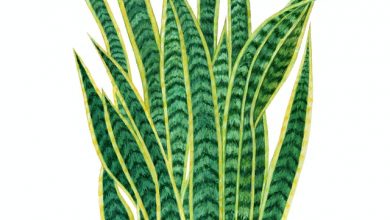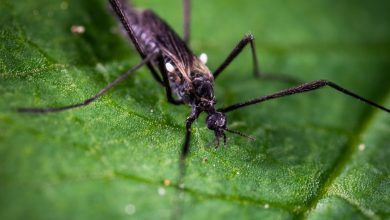How to Grow and Care for an All Year Garden

Gardening can be a tricky hobby. It’s not entirely within your control, and as the seasons come and go, so too do your flowers. However, it doesn’t have to be this way. There are plenty of plants and flowers that grow all year round. So many, in fact, that it’s possible to have a garden specifically designed to make sure you have something growing at all times.
If you enjoy gardening as a hobby and as a way to unwind and relax, then this really should be your ultimate goal.
Strategy
Planning this type of garden is more than just getting down on your knees and getting in the dirt. So if you only practice gardening casually and without much thought this may not be for you.
You need to think strategically. What goes where, and what follows what? It all needs to be calculated for effect, and it all needs to make your garden look good. That’s why it may be helpful to follow a strategic way of thinking, such as by adopting a bone structure of your garden.
This is the structure that gives your garden permanent bulk – the things that are big and give shape and never need to be replaced. Trees, hedges, and shrubbery are examples of this.
Your garden’s bone structure doesn’t just have to be plants, though. It can include man-made, hard landscaping features. These are things like walls, paths, driveways, arches, gates, and sheds.
All of it plays a part in how your garden looks, and by understanding the natural form of the land, you can make better, more tactically sound decisions when it comes time to start planting.

Choices, Choices, Choices
After you get the hang of understanding the bone structure of your garden, you can begin to worry about the variables. This includes the types of plants you have to deal with: bulbs, annual, perennial, herbs, etc.
A solid understanding of the more technical side of gardening definitely helps out here. Being able to understand in depth the conditions needed for certain types of flowers to grow, as well as its grow cycle, makes the process a lot easier.
Think of these like adding flesh to the bone of your garden. You need to aim to complement your garden’s key characteristics and non-variables. Yet, at the same time, you have to make sure that you plant so that it looks good at any time, not just during the better months of the year.
The Key Players
Knowledge comes with time and practice. You have to just get in there and get to work, and eventually, the key players in your year-round garden can make themselves evident to you.
What you’re looking for in these is not just something that looks pretty or thrives in harsh environments. You’re looking for plants that add value to your garden all year round, in bloom or not.
A great example of this are the spurges and hellebores. These plants provide greenery to your garden even when not sprouting flowers.
Don’t forget, you’re thinking tactically here, and foliage is just as important to your garden as lush lots of color.
Here’s a quick list of some other key players for you to make use of:
- Californian poppies
- Madonna lilies
- Giant catmint
- Red dahlias
- Peonies
- Asters
- Daylilies
- Geraniums
- Red crocosmia
- Delphinium
- Foxgloves
- Purple alliums
Use these flowers tactfully and weave them together well. Use complementary companions to each. Otherwise, you risk your garden looking like a disorganized mess, as opposed to an intricately crafted masterpiece.
There are, of course, other key players out there, and what you have at your disposal depends on where you live. So do some more research to see what suits your needs.
Mix it Up
For this to work, you need to be planting your garden in cyclical layers. This means you’re going to be growing different things on the same patches of ground.
The idea is that, as one group of flowers begins to die off, another is already there to take its place.
This is a tricky skill to master, but absolutely crucial when it comes to this process. For example, you can plant bulbs and early perennials together. As the foliage of the bulbs begins to wither and die, the perennials are there to cover it up and take its place.
In turn, some perennials die as the year goes on, and you need to have seeds in the ground preemptively to keep your garden looking great. So stay on your toes.
Generally, you need to plan for replacements in the early spring, then the mid to late summer. In other words, grow plants according to the first and last frost. It’s difficult but possible, and yet again requires research.

Nurture the Soil
With so much planting and rotation going on, it’s only natural that your plants would suck the ground dry of all the good stuff that keeps the flowers growing.
This is where you need to step in to keep the soil in good condition so that your plants stay healthy.
Usually, you do this twice a year, once again in sync with the first and last frost in spring and autumn.
You need to do this by mixing your soil with some compost or rotting manure. You need to be careful, though. Some plants don’t like some fertilizers and don’t grow if it’s present. So make sure that your plants and fertilizer are compatible before you get started.
This can be an expensive process, depending on what type you decide to go with. Just know, you don’t have to break the bank to yield results. So long as the fertilizer is friendly to your plants, you don’t have anything to worry about.
A Tip for Bulbs
Bulbs like to be planted deep – around two and a half times its length, to be precise. That’s a general rule, but it can vary from plant to plant. Tulips, for example, like to be buried deeper than that.
Perennials
When you’re planning for perennials, don’t be greedy with the comport, really lather it on. When digging, make sure the hole is twice as big as the plant in width and set at the same level. Then, fill in the gaps with a soil and compost mix. Afterwards, you can stand back and watch the magic happen. It will be over the course of a few months, but still. Perennials are super hardy plants, and if you care for them right, they can continue to bloom for years on end.
Find Inspiration
Don’t be afraid to look to outside sources for inspiration and ideas. You can check out blogs, websites, or catalogs to see what catches your eye and what is appropriate for you to grow.
Alternatively, a great way to get inspired is to visit another garden yourself. Of course, you could just take a trip over to your neighbor’s well-maintained garden, but that isn’t too much help. Instead, plan out a trip to a public access garden or botanical garden, if you are lucky enough to be near to one.
The gardens are filled to the brim with all sorts of wonderful flowers, all arranged and planed out by professionals, so where better to turn to for generating ideas for your own garden?
Draw a Map
A good practice before you start doing anything practical is to draft up a map of your garden. This includes the bone structure, so everything in your garden that is a permanent feature — things like trees, paths, sheds, and the like. Doing this allows you to visualize what you want to do before you do it, so you can avoid mistakes and optimize your garden, theoretically.
Not only that, but you can use it to see where you want to plant what. Use it to plan out rotations and what to plant as companions to each other. What types of plants to grow, what colors, and what shrubbery are all included, as well as whether or not you want additional features, like a greenhouse.
It also helps make the whole practical side of things much less of a hassle. By having a clear plan of what you’re doing and where you’re doing it, you can systemize your gardening. So the work is easier for you, and your garden benefits as a result.
Use your map seasonally and draft up new ones as needs be, but don’t just use it for the flowers and structure. Use your map to plan out what fertilizer to use and when you need to use it, as well as any other maintenance, you might need to do.

Design
This whole process is a design process, and as such, requires a bit of creative imagination. You aren’t limited by anything other than your own mind, so get the juices flowing.
You can decide to mix up your garden by planting some stuff in strategically placed containers. Hanging baskets, in particular, look stunning when done right. Alternatively, you could go for a windowsill box, and get that le petite old school look going on, or just go with a common planter.
You do get the choice of what kind of planter to use, though, and there are so many unique designs out there. You can use concrete and bricks to make some really interesting looking stuff, so put your mind to work.
One thing that most gardeners overlook throughout this whole thing is the grass. There are different types of ornamental grasses you can grow in your garden to turn it into a beautiful year-long sea of green. So don’t forget about it.
Another thing often neglected is all the senses other than sight. A garden is not simply a painting for you to observe; it is an experience – a piece of art that has the power to stimulate all of your senses. To not use it to its full potential is a disservice.
Think sound. The chirping of birds in the background over the trickle of a waterfall is divine and very much able to be captured. Hang up some bird feeders around the place and install a fountain or a waterfall design ornament.
Smell, thankfully, comes naturally. It’s a flower garden after all, but that doesn’t mean you can’t think of it strategically. Plant some lavender close to the door, so that you instantly get that waft as you enter.
With taste, you can plant some berries around the place. It’s just an extra layer on top of what is already a stimulating masterpiece.
This can get expensive, though. Having to pay for a waterfall installation is costly, but with a bit of research, you can make one yourself. So if you’ve the confidence, go for it. Paying for a landscaper is also an exercise in expense, but again, if you have the skills, do it yourself and save the cash.
Variety
You’re not limited to just flowers in your garden. In fact, you’re going to want to have a bit of variety in the things you grow. Herbs, vegetables, fruits, climbers, and more all make for part of the experience.
This also allows you to think practically. For herbs, what looks good, smells good, and is going to be useful for you? One of the most popular ones is basil. Basil brings a nice bit of greenery to wherever it’s planted and has a faint aroma.
Where basil really shines, though, is in the kitchen. You can use it in a lot of dishes, but specifically, homemade sauces. You can mix it with garlic and tomato to make a gorgeous marinara sauce.
On that note, tomatoes are always a nice addition. It has lots of uses in the kitchen, and grow well.
Fruit wise, you can go for something bushy like strawberries. It’s fairly self-explanatory why you would want strawberries in your kitchen. The berry is sweet, goes well with whipped cream or chocolate, and makes for a great dessert.
Of course, this aspect of your garden depends on your household. You may have some fussy kids running around who don’t eat tomatoes. In that case, you don’t want to grow them, or grow too many of them, as that increases waste.
If you have some ugly stone walls surrounding your garden, consider investing in some climbing plants. This also goes for if you have a trellis or a fence. It is beyond helpful to learn how to use these, as you can use them to hide any unsightly features.
On top of these, you might consider isolating a spot in your garden to plant some flowers for cutting. It’s sort of oxymoronic to plant to cut while we’re trying to make the garden look as divine as possible, but having some home-grown flowers in a vase on a patio table is just as much a part as any.
If you’re clever with it, you can pull this off unobtrusively. So put on your thinking cap if that’s something you’re interested in.

Keep Them Safe
Yet another plant you need to plan for are those that can act as insect and pest repellent for your other flowers and eatables. Sprinkling these throughout your garden is critical if you want to avoid all of your work being gobbled up, especially if you plan to implement things like bird feeders.
There are different types of plants for different critters, a lot of them herbs, and some even dissuade rabbits and deer from roaming in and helping themselves, so do a little reading and see what you’re going to need. Just make sure that the plants look good and that you plan them out to get full coverage. You can use your map for this.
You may also want to consider throwing a net over your berries to stop birds from getting at them. These little delights are not so easily blown away as slugs and other creepy crawlies, so unfortunately, you may be forced into taking that kind of more direct approach. It’s not ideal, but it may be necessary.



